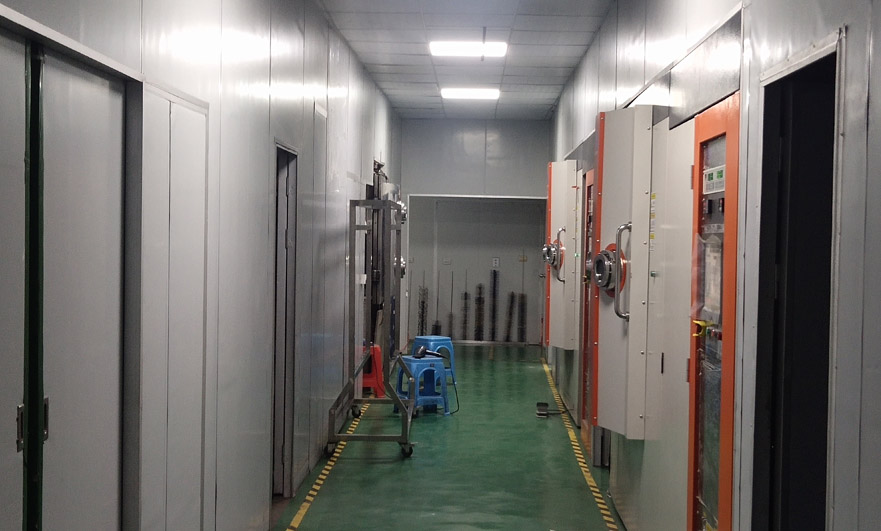15 years one-stop China custom CNC machining parts factory

Hey there I’m VMT Sam!
With 25 years of CNC machining experience we are committed to helping clients overcome 10000 complex part-processing challenges all to contribute to a better life through intelligent manufacturing. Contact us now
 154 |
Published by VMT at Oct 22 2021
154 |
Published by VMT at Oct 22 2021
Surface treatment of CNC machined parts: the distinction of "rack plating, barrel plating, continuous plating, brush plating" in electroplating
Electroplating is a common surface treatment. It uses electrolysis to attach a metal film to the surface of a metal or other material to prevent metal oxidation (such as rust) and improve aesthetics. Among them, it can be divided into rack plating, barrel plating, continuous plating, brush plating and other process methods, which are mainly related to the size and batch of parts to be plated. This article mainly discusses their differences and related knowledge.
Hang plating:
Rack plating is also called hanging plating. It is an electroplating method in which parts are mounted on a hanger for plating deposition. It is generally used for electroplating of large-size parts (such as rims).
Features: Large parts and small batches, the thickness of the coating is more than 10 um.
Application: car bumpers, bicycle handlebars, etc. The rack plating production line can be divided into manual line and automatic line.
For small parts (such as small screws) that cannot or are not suitable for mounting due to factors such as shape and size, barrel plating is generally used.

Barrel
Barrel plating is strictly called drum electroplating, which is to place a certain number of small parts in a special drum, and deposit various metal or alloy coatings on the surface of the parts in a rolling state in an indirect conductive manner to achieve surface protection, decoration or function A method of electroplating for sexual purposes. The processing volume of barrel plating accounts for about 50% of the entire electroplating processing, and involves dozens of plating types such as zinc plating, copper, nickel, tin, chromium, gold, silver and alloys.
Features: Large quantities of small parts, the thickness of the coating is below 10 um.
Application: Fasteners, stamping parts, plumbing parts, electronic components and other similar mass-plated parts, etc.
Continuous plating
The processing technology of continuous electroplating is essentially the same as general electroplating. However, the processing time of each process is much shorter than that of ordinary electroplating. Therefore, various treatment solutions and plating solutions must have the ability to adapt to rapid electroplating.
Features:
1. Make the thickness of the diffusion layer formed on the surface of the cathode as thin as possible. Pulse current can be used, or stirring can be strengthened;
2. The plating solution can be sprayed to the surface of the plated parts at high speed without affecting the location accuracy of the local plating;
3. Improve the conductivity of the substrate to be plated;
Applications: Electronic connectors for sleeves, t-sub connectors for interfaces, electronic connectors for internal assembly, etc.
Brush plating
Brush plating is also called coating or bathless plating. Its principle and essence belong to the range of electroplating process in electrochemical machining. Contrary to electrolysis, a process in which metal ions in the electroplating solution are deposited on the cathode under the action of an electric field. The thickness of the brush plating layer is generally ≤0.5mm, and there is no processing or a little processing after plating. Therefore, the surface of the parts to be plated should be processed to meet the requirements of shape and position accuracy and surface roughness before plating to obtain a uniform coating.
Features:
1. The equipment is simple, no plating tank is needed, and it is especially suitable for local plating of large-scale equipment on site.
2. The area to be plated is not limited, and for some complicated parts, it is difficult to obtain a satisfactory coating during electroplating, and the brush plating process can solve this problem well.
3. The coating has low hydrogen embrittlement.
Application: Brush plating of cadmium (mainly used in the military industry) and iron (mainly used in engineering improvement) are more commonly used.
Summarize
The electroplating solution includes acidic, alkaline, and acidic and neutral solutions with chromium mixture. No matter what plating method is used, the plating tanks and hangers in contact with the products to be plated and the plating solution should have a certain degree of Versatility. Only by understanding the working principles of various galvanizing equipment can we correctly identify which galvanizing method is more suitable for us.
Ready To Start Your Next Project?
Get Instant Quote

Request a Free Quote
Send us a message if you have any questions or request a quote. We will get back to you ASAP!